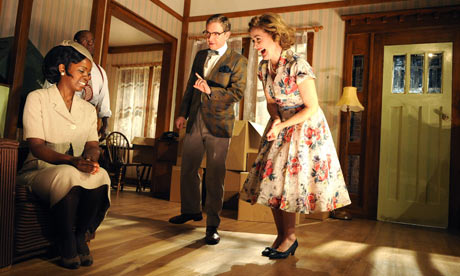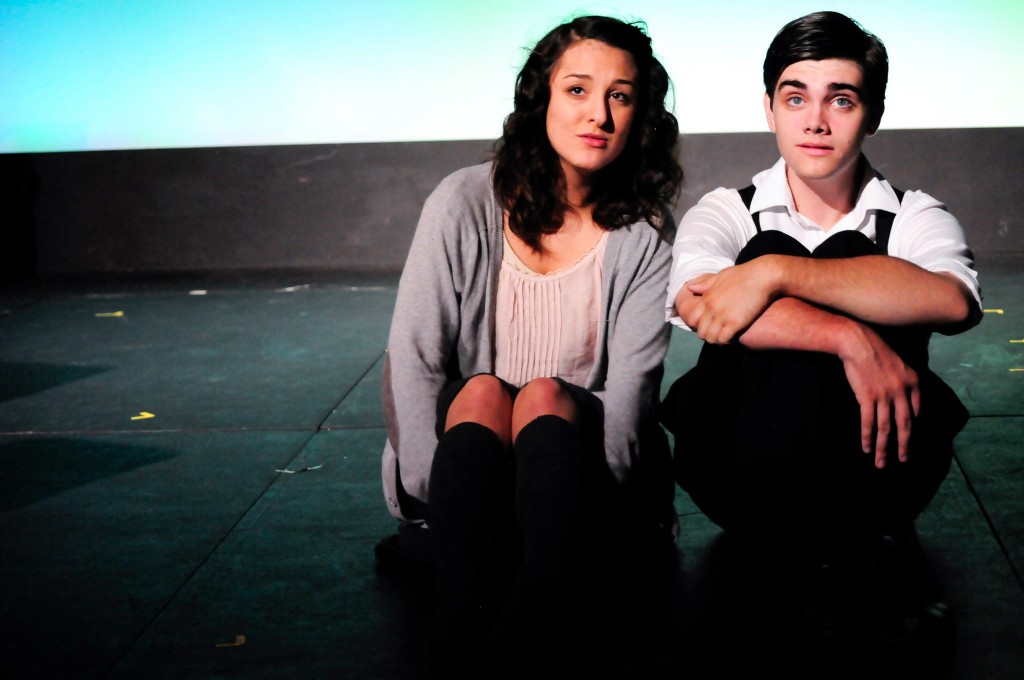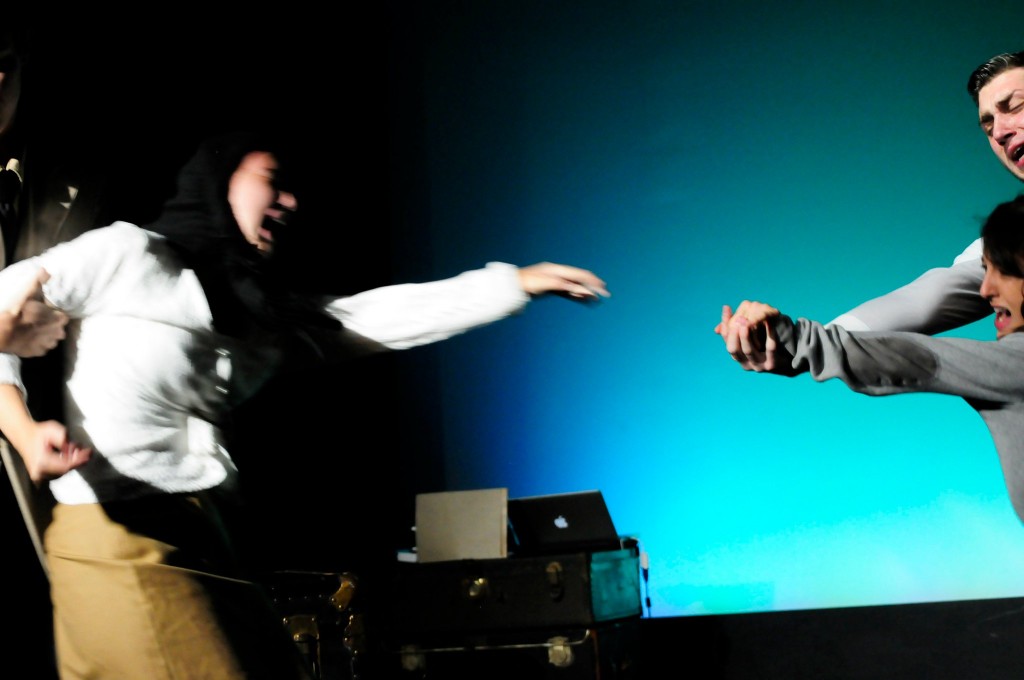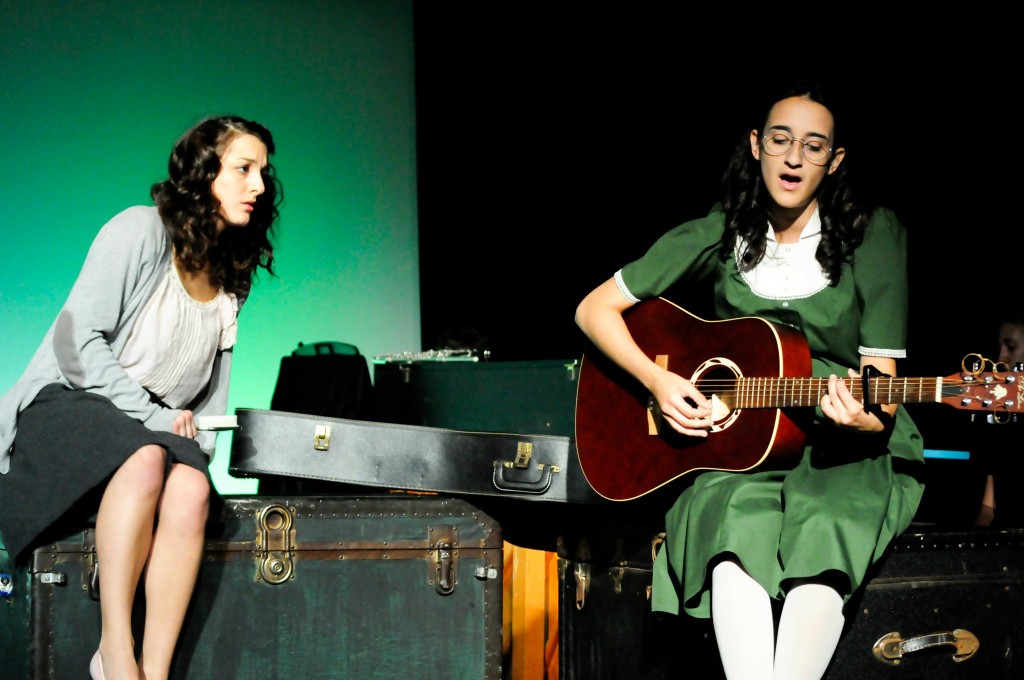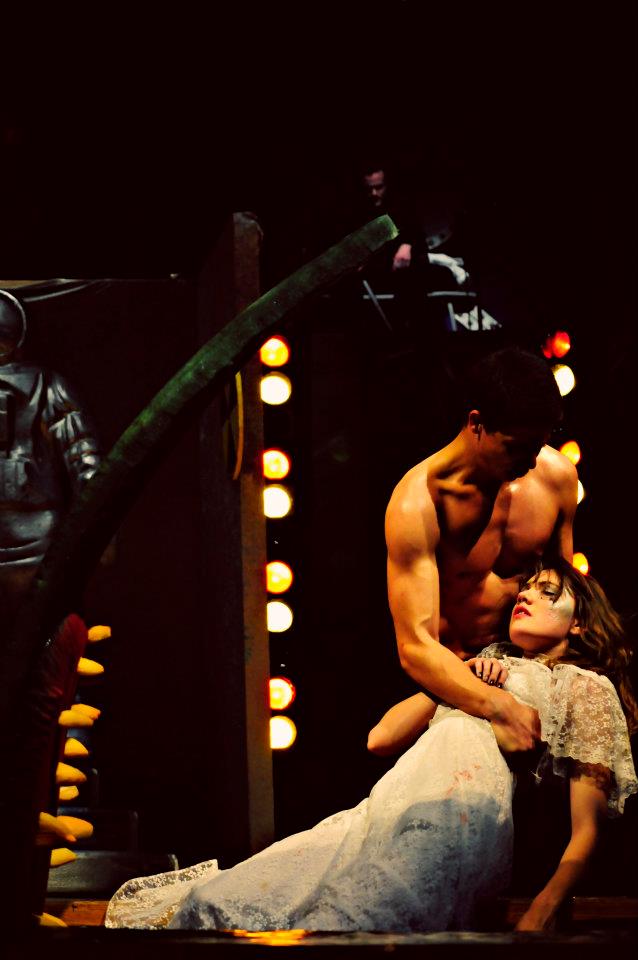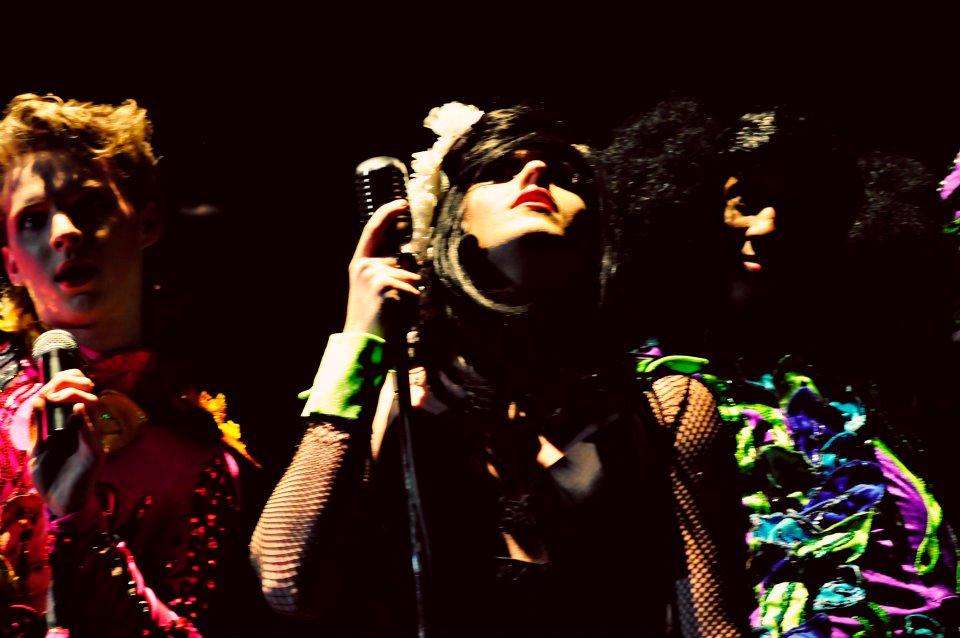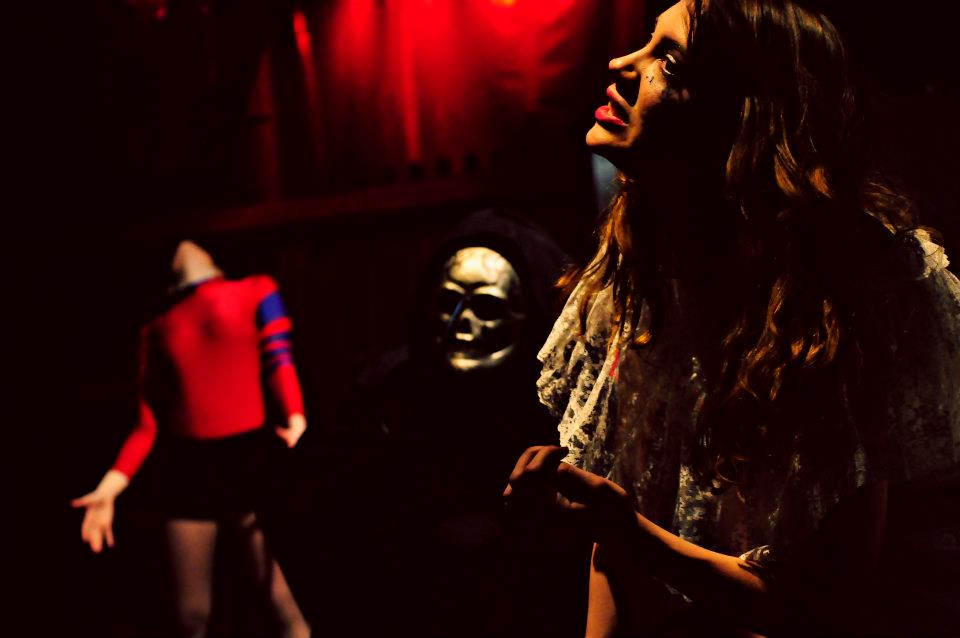
[IMPORTANT UPDATE AT THE END]
Here’s a story for you, and it’s a good one, an uplifting one in this time of constant headlines about this or that art form dying or being in yet another crisis. It’s about a little theater, a small off-off-Broadway space[1] towards the bottom of that Triangle Below Canal, a professional theatre well known for experimental work called The Flea. This little experimental theater nearly went out of business in the wake of 9/11, when Tribeca became a ruined, gray-dusted alien landscape. The Flea was only saved through a mixture of innovative fundraising and striking gold with a hit play called The Guys, a two-hander about a reporter and a firehouse hit hard by the WTC attacks that starred a roster of celebrities, ran for years and helped put the theater back on solid footing.
Now, thirteen years after the theater nearly went out of business, The Flea is thriving. Its resident acting company (called The Bats) numbers around 150 people and produces work constantly. A directing apprenticeship program helps mentor the next generation of directors. The theatre does a variety of programming with a kind of ambition—particularly where cast sizes are concerned—that no one else in town can match on a budget so small as to be almost unimaginable.
It’s a remarkable turnaround, so remarkable that The Flea has managed to raise $18 million to purchase a nearby building and convert it into a new space. The new space will have three state of the art theater spaces available to local companies to rent for cheap[2] and allow The Flea to produce more work. And so far, the plan has received rapturous coverage in the press, helping to raise the profile of The Flea even further[3].
There’s just one little wrinkle in this story, and it’s about The Bats. You know, the resident company of 150 or so early career actors? The ones the Times calls the “beating heart” of the theater? The young, hip, diverse troupe whose work helps ensure the theater is constantly full of young, hip, diverse audiences? Well, they’re unpaid.
*
Is it a problem that The Bats aren’t paid to act? It turns out that answering that question involves answering a whole lot of other sub-questions. Questions like: is acting a job? If it is, is exposure a form of payment, a kind of service in lieu of cash, perhaps? Are there mitigating circumstances that affect any of this? Does it matter that the kind of large scale, ambitious works The Bats often do at The Flea would be impossible if they had to pay their actors? Does it matter that there is the money to build an $18 million new space but seemingly no money to pay artists?
It turns out the answer to those questions change depending on who you talk to, depending on what kind of story you want to tell. The story that tends to get told about the arts leaves out labor issues[4]. If labor—and that no-no topic, pay—are brought up at all, they’re usually in the context of whether or not Broadway performers, musicians and technicians are getting paid too much, despite the fact that, as Terry Teachout discussed in the Wall Street Journal, ballooning marketing costs are largely to blame for increased ticket prices on the Great White Way. Rarely discussed in the conventional story about theater and money is that salaries are so high on Broadway because those high payments make it possible for artists to remain in a system that, except for their brief tenures in the largest theaters, will ask them to do enormous amounts of work, often for little to no money[5].
The story we tell each other about creative work, meanwhile, is that it isn’t really a job, not really, and that you should be grateful for what you can get for it, even if other people are getting paid off of the work that you do. This isn’t limited to theater. David Byrne recently talked about this issue and music in Salon, and Molly Crabapple wrote about it in the visual arts for Vice. Many (if not most) literary magazines don’t pay. Many major websites won’t pay for writing if they can get away with it. Hell, I am currently writing this essay about The Flea not paying its early career actors for a website that doesn’t pay its writers. I don’t always see a problem with this. Here at Hooded Utilitarian, no one, including Noah Berlatsky who works much, much harder on it than I, makes any money off of it. HU is a labor of love (or, for some of you, hate) where we can get together and publish things we’re unlikely to place elsewhere. It’s a site where professionals do some non-professional—but hopefully professional quality— work.
There’s a term for this kind of work—professional grade labor that goes unpaid (and is thus amateur)—and that is “pro-am.” We’ve all witnessed how the internet has created an exploding pro-am writing sector. This has been positive in all sorts of ways. There is more great writing being produced every day, easily available at little to no cost for the reader. And as long as the reader’s costs are the only part of the story you’re interested in, it’s incredible.
I started working as a theatre professional as an actor in my teens. In the twenty years since, I’ve witnessed a similar explosion in the pro-am sector in the dramatic arts. Undergrad and graduate theatre programs have grown in number and size, and the number of paying jobs outside of academia hasn’t kept pace. This dynamic has both depressed wages and fueled vibrant pockets of “independent theatre” in many American cities, as artists have come together to create work for little to no money[6].
Given this reality, perhaps the right question then is… what’s the line? When does something stop being a pro-am labor of love and start being something more problematic?
In the case of The Flea, setting the boundaries of the acceptable is thorny.The Flea exists in a specific context and a specific industry. Early career actors tend to have only a few options available to them, all of them bad. They could self-produce work at great personal cost, even if they convince Uncle Shmuel and Aunt Betsy to kick in some money. They could act in self-produced work, which is something of a crap-shoot, exposure-wise. They could intern at a theater (likely for free), stuff envelopes all day, and if they are very, very lucky get someone to come to a show of theirs from, like, I don’t know, marketing. They could go to graduate school (at, again, great personal cost[7]) and, chances are, end up right back where they were only better trained and in enormous debt. Most perniciously, they could pay to take an “audition workshop” with a casting director (or just as often, a casting director’s assistant) which is really just a pay-to-play audition.
It’s a raw deal, in other words, this life of an early career actor. And it will continue being so for the foreseeable future because—and this should read familiar to any writers out there—the supply of actors so overwhelms the demand for them that the dollar value of their labor has been depressed to, essentially, zero. Given this, what The Flea provides—real exposure, free rehearsal space, frequent opportunities to get up on stage and learn one’s craft through getting work up in front of an audience, a chance to produce work, connections, a real community of fellow artists, and the opportunity to learn various ancillary skills of theater without having to pay a dime—is nothing at which to scoff.
All The Flea asks is that, in exchange for getting to be on stage, The Bats work three hours a week doing tasks around the theatre—more if they’re currently in a show since they’re benefiting more—an exchange that, when you talk to any current Bat seems to make perfect sense. It’s hard to argue that three hours of labor in exchange for the opportunity to be in shows is onerous. Indeed, The Bats love being Bats, and don’t feel particularly exploited.
Unless you view acting in plays as labor. And how is it not labor? The Flea is charging money for people to see The Bats perform[8]. The institution is building itself based on their work. It’s one thing to accept that early career artists must be paid in exposure. It’s another thing entirely to accept that they must be paid in exposure and that they must also pay for the opportunity in sweat equity.
That sweat equity is also problematic in ways not often discussed. Three hours is not a lot of work to ask an individual Bat to do per week. But with 150 Bats, each doing at least three hours of work for free, The Flea is picking up at least 450 hours worth of free labor per week. That’s ten full time employees worth of work. While this is clearly part of what makes The Flea able to do what it does on such a shoestring—and helps explain why, despite moving to a three-performance-space complex, they’re only expanding their paid staff by two—it has the unintended side effect of further depressing wages, setting an uncomfortable precedent for how a professional theater should be run[9].
These problems are only heightened by the new $18 million building. Practices that are forgivable amongst the scrappy are less so amongst the well-appointed, as Upright Citizens Brigade and Amanda Palmer have recently learned. Supporters of The Flea I’ve spoken with will tell you that paying actors and buying a new space are separate conversations, different stories. The Flea is currently spending around $17K a month in rent, and the new space will secure their future. Furthermore, it’s nearly impossible to raise money to pay artists properly and much, much easier to get donations for “brick & mortar” projects[10].
While I agree that the new building is necessary and am happy for The Flea’s good fortune, and happier still that off-off broadway companies will have access to three nice, clean, functional spaces at a low rental cost, this is almost too clever by half, this walling off the payment of labor from conversations about budgets, about donations, about the “public good” part of a nonprofit’s mission. It may be true that the problems of The Flea are the problems of the industry that The Flea is in. But that doesn’t mean The Flea shouldn’t show leadership on issues of labor fairness.
After all, The Flea has retooled The Bats before, to the mutual benefit of both the company and the theater. The work hour requirements for The Bats used to be higher, and the jobs more menial. The Bats used to perform in fewer shows, there used to be fewer of the Bats, and, according to current and former members I spoke to, less of a sense of community. The Flea even once charged actors a fee to audition[11], something they’d never imagine doing today. The Flea also hasn’t precluded rejiggering the program again three years from now when the new building is complete.
There are a number of changes The Flea could make that would still allow them to do ambitious large-cast projects with an excited community of performers while showing leadership on labor issues. The Flea could simply begin paying The Bats when they appear in shows. It needn’t be a large amount of money; even a stipend would send the message that the theater values The Bats and takes their art seriously. Being a Bat is often likened to a kind of practical graduate school, a training-by-doing program. Part of that training could—and should—include teaching The Bats that their art is worthwhile enough to be paid for practicing it.
If The Flea does not want to do that, they could drop the work requirement. Or they could work with the actors’ union to turn The Bats into an Equity Membership Candidacy program, a true apprenticeship[12] that ends with the actors well on their way to Union membership[13].
More drastically, The Flea could drop the 1-2 professional shows from their annual calendar and cease calling themselves a professional theater altogether. This wouldn’t stop them from working with professional artists from time to time, particularly where playwrights and directors are concerned. The model for how The Bats work, a tight knit group of artists who do most of the work around the space including everything from running the concession stand to hanging the lights, is already closer to that of a community theater than it is to anything else. While “community theater” is a term loaded with all sorts of associations, most of them negative, it is where most Americans will go to see (or take part in) large cast, ambitious shows that don’t pay actors.
There will not be any pressure on The Flea (and other, even worse companies) to reform so long as the story we tell about art remains the same. So long as we keep telling each other that exposure is payment, that erecting a new building is the only true sign of success, and that labor issues are irrelevant, so long as we keep writing the same story, glowingly reporting the official line without digging an inch deeper, we’ll be stuck in the same place: Bigger, shinier buildings—or websites sold to AOL—with broke-ass people getting paid less and less to do the creative work that keeps them alive.
UPDATE: Since this article was posted, one of the people I interviewed for it (the one mentioned in the final footnote) e-mailed to say that she neglected to mention during our interview about The Bats and and payment that The Bats receive a nominal stipend during tech rehearsals, since those are what are known as “10 out of 12s” which is to say, 12 hour rehearsals with two one hour meal breaks. This schedule makes it impossible for Bats to make money elsewhere, like temping or waiting tables etc. while in tech. The stipend was introduced last year and is variable, but under $50. This means that, when they appear in shows, the Bats are no longer working for free, which is a positive step.
That said, when The Bats are not working in shows, they are still doing 3 hours a week of uncompensated labor around the space. And I would furthermore argue that less than $50, framed entirely as a way to make up for hourly wages lost elsewhere during tech rehearsals, is still inadequate. It is far less, for example, than the daily subway fare a Union actor is paid in a showcase production. And the larger issues of how we value the people who actually create art in our culture remain. But it is a positive step in the right direction and reinforces my hope and belief that The Flea wants to find ways to do right by their ensemble.
[1] Off-off Broadway refers not to theater location but the kind of Union contract it uses when working with members of Actor’s Equity Association (aka Equity or AEA). Off-off Broadway codes are for New York City theaters under a hundred seats. Off-Broadway is the designation for theaters holding between 100 and 499 souls. Anything larger and you’re in Broadway contract territory.
[2] This is no small thing. Theater space—even a 50 seat shithole—can cost thousands of dollars a week to rent, making the amount of cash young companies have to shell out to produce their work often the largest parts of their budgets.
[3] This is one of the reasons why theaters embark on building campaigns. Often the first season after a new building opens brings more audience members and donors, although I once heard a fundraising consultant say that those new donors and viewers often vanish after that first year or two.
[4] It was highly controversial, for example, when Jason Zinoman made the argument in the New York Times that the Upright Citizens Brigade should start paying at least some of its performers, given that a large and very successful institution had been built off of their labor.
[5] A union actor acting in an off-off Broadway show can make as little as daily subway fare in pay. Union actors working Off-Broadway often make under $500 a week. And that’s when they’re actually working on a show. Things like staged readings don’t always pay. And, of course, there’s the gaps between gig when actors aren’t getting paid at all.
Perhaps this is too much to get into in this space, but this is one of the many reasons why the current theatre system is set up the way it is, with larger “regional” (non-NYC) theaters hiring NYC-based actors. The theaters pay a premium for what is generally considered a more talented labor pool. Actors then make more money on the road both through higher weekly salaries and through subletting their apartments back in New York. It’s a system that screws just about everyone. Working actors pay an enormous premium to have a NYC mailing address. Local actors often won’t even get to audition for shows in their hometowns. And for audiences, to paraphrase monologist Mike Daisey, it’s something akin to going to see your hometown baseball team and finding out they’ve been replaced by a bunch of people who guested on Law & Order a couple of times.
[6] The vast majority of Portland, Oregon’s theatre scene is made up of pro-am companies, for example. It’s worth saying that some indie theater companies take pride in compensating their artists to the best of their abilities.
[7] Nearly all graduate schools for theatre cost roughly one vital organ per year to attend.
[8] As this audition notice (http://www.theflea.org/blog_detail.php?page_type=4&blog_id=238) makes clear, performing is a lot of work in and of itself. In case you don’t feel like clicking over and reading it, this Bats production asks actors to commit to almost two months of six-days-a-week rehearsals plus two months of 5-days-a-week performances, tying up their schedule from January until May. This would, amongst other things, keep them from getting paying acting work for half of the normal theatrical season.
[9] After all, can you really call yourself a professional theater if the majority of the work in your theatre is done on a non-professional basis?
[10] Most of the money for the new building is coming from the City of New York. By comparison , the National Endowment for the Arts is legally barred from giving money directly to artists to support the making of art.
[11] According to an actor who auditioned during this time and joined The Bats a year later, in the wake of 9/11 they charged prospective Bats $25 to audition, saying that they needed to cover the hole in their budget caused by the terrorist attacks.
[12] The Bats are called volunteers, not apprentices or interns. Were the program called an internship, it could be illegal, as by law interns cannot do the work traditionally done by paid employees and more benefit must accrue to the intern than to the company they work for. These laws are on the books to prevent companies from skirting minimum wage laws, something it could be argued The Bats’ weekly work hours requirement clearly does.
[13] There are almost no professional actors in the non-profit system who aren’t members of Actors Equity Association. You cannot be a member of AEA and be part of The Bats. One Bat I spoke to loved being a Bat so much (and was getting regular acting work that she cared about) that she declined joining the Union so she could stay in the group.

